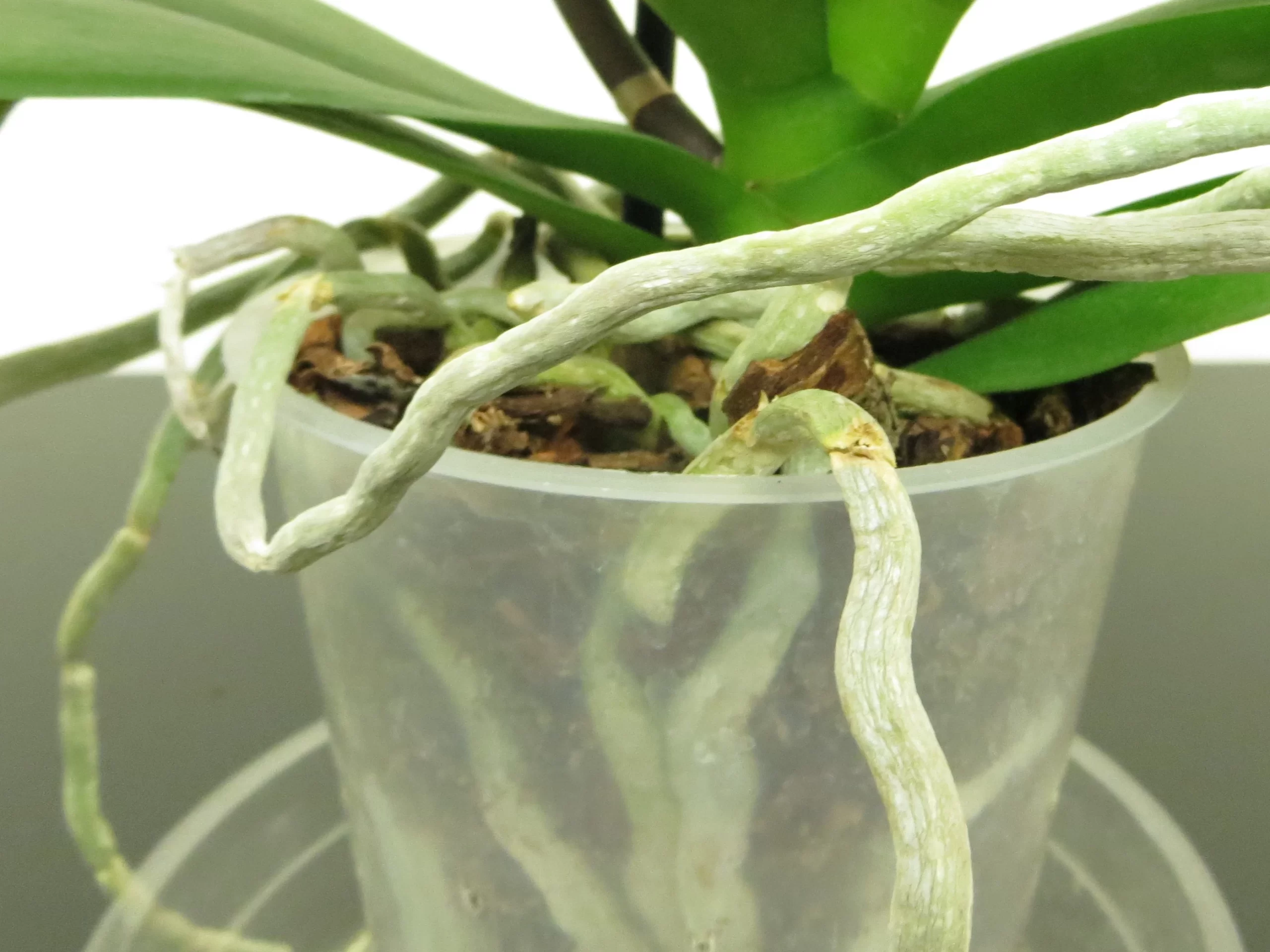Orchid root rot can be dangerous, although a bit subtle. It is an underlying issue that you find at the bottom of the pot more often than not. Roots appear brown and mushy in colour, lacking turgidity, dried out, and flat sometimes. Orchids are usually susceptible to fungal infections, and these infections easily damage the roots of these plants. Orchids rotting roots can happen primarily because of maintenance errors among the orchid plants. If the disease is caught early, then it is easy to eliminate the root rot, and the orchid can survive very easily.
There are organic bactericides like Bactonus, which are making the life of the orchid farmers easy. It has good ingredients and agents like Bacillus safensis, Bacillus velezensis, and Pseudomonas chlororaphis. These are the active ingredients that control and prevent bacterial and fungal attack that mostly happens during growing seasons. Bacillus velezensis is a significant ingredient that colonizes near the roots of the orchid plants to avoid any kind of bacterial and fungal attack. We will discuss more about it and how it is an excellent alternative to cultural and chemical practices.

Cultural practices are relevant in many places where there are plantations of orchids. These are air preferring plants and need more air movement usually. Cultural practices include maintaining the temperature and humidity at the required levels. Then there is greenhouse farming, which looks helpful. There are a few varieties that usually need more free movement of air than others, and that is something that you need to keep in mind while following cultural practices.
The limitations of cultural practices are that they can be helpful in prevention sometimes but not in curing the disease if the harmful fungi have started attacking. Prevention measures are also dependent on many factors, which is why it does not give complete assurance even in prevention.
There are many chemical pesticides that are available in the market to resolve the issues faced by the orchids due to rotting of the roots. Physan 20, Daconil, and Thiphanate Methyl are the products that are used to protect orchid plantations. Hydrogen peroxide is a bit of a less toxic option. These options are used in spray bottles. The issue with this option is that it hampers the soil in the long term. It is also not suitable for orchid plants as it gives terrible nutrition.
Bactonus is a popular organic bactericide. It is designed to biologically control the pathogenic fungi and bacteria that cause diseases among orchid plants. Novobac has a patent formulated with the help of Bacillus velezensis, Bacillus safensis, and Pseudomonas chlororaphis, a type of biocontrol agent. These are the active ingredients that always create a shield around the orchid plants to protect them from suffering issues.

Although there are a few key ingredients, Bacillus velezensis is the one that is quite active in protecting the orchids. It usually prefers to have colonies so that the dangerous fungi and bacteria nutrition in-take decreases. It slowly kills the hazardous bacteria to protect orchid plants’ roots from rotting. Bacillus safensis also plays a vital role, and it can absorb mycelium present in pathogenic fungi to produce chitinase to break down the fungi and prevent their growth.
Bactonus combats plant diseases very quickly. There are a few things you need to know that help this bacterium combat plant disease.
Bacillus velezensis is a very well-known nature, friendly, and compatible bacterium thanks to its non-toxic nature. It is a valuable tool as far as sustainable agricultural practices, and the treatment of soil using fungicide treatment is concerned. Bacillus Velezensis, a top bacterium used by Novobac, a leading manufacturer in sustainable agricultural practices, actively prevents the attacks of harmful fungus when used in an anti-fungal plant spray. Manufacturers use this bacterium in bacterial powder for bacterial biocontrol.

There are a few benefits of Bacillus velezensis in plant health. The significant points are:
If you are a person who likes sustainable agricultural practices, then you can prefer bio-bactericides like Bactonus, which has Bacillus Velezensis as its active ingredient. It not only prevents and cures the disease quickly but also ensures the safety of the environment and soil. Unlike the chemical method, it protects the environment, and unlike cultural practices, it is very quick to cure and prevent the issues faced by the orchids. You can also use sterile clippers to remove the leaves. Always be sure that you kill the fungal spores easily. With good nutrition availability around the roots, thanks to Bacillus Velezensis, you can expect the health of orchids to stay strong.
There are a few ways to apply Bactonus, and they are:
Knowing the right ways of application can help farmers to strengthen the health of orchid plants. While applying, always ensure there is the right mix of water and Bactonus powder to get the best results.
Many farmers face problem to how to get rid of root rot orchid? Orchid root rot is an issue caused due to humid and hot temperatures or may be due to fewer gaps among the orchid plants. Bactonus is the best option to resolve the orchid root rot issues because it is not just about sustainable agricultural practices but also about curing orchid root rotting. Sustainable agricultural practices should start by opting for bio-bactericides instead of chemical pesticides. Novobac is the brand that has a patented formula for Bactonus that helps people maintain sustainable agricultural practices and get the desired results very easily.
As a plantation owner, I face quite a few..
The banana weevil, also known as Cosmopolites sordidus, is..
Fusarium wilt in banana is usually known to be..

Leave a Reply